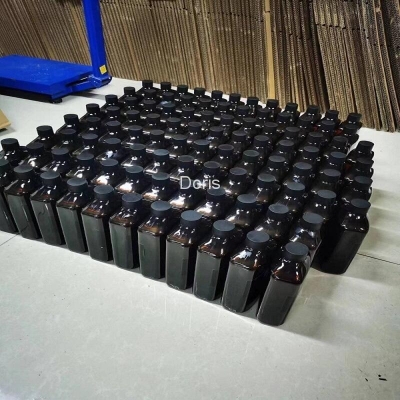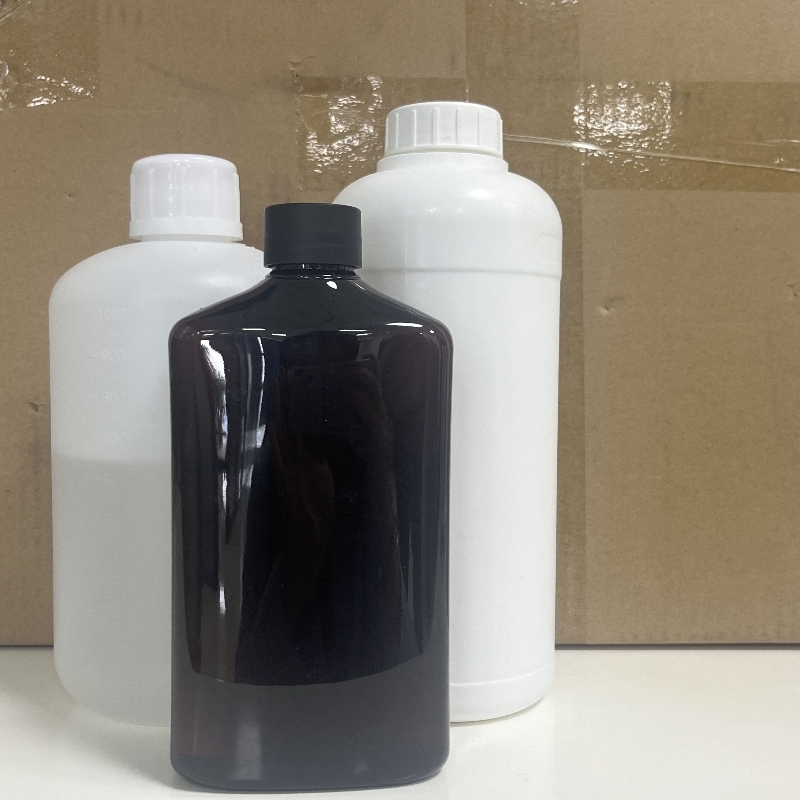-
Categories
-
Pharmaceutical Intermediates
-
Active Pharmaceutical Ingredients
-
Food Additives
- Industrial Coatings
- Agrochemicals
- Dyes and Pigments
- Surfactant
- Flavors and Fragrances
- Chemical Reagents
- Catalyst and Auxiliary
- Natural Products
- Inorganic Chemistry
-
Organic Chemistry
-
Biochemical Engineering
- Analytical Chemistry
- Cosmetic Ingredient
-
Pharmaceutical Intermediates
Promotion
ECHEMI Mall
Wholesale
Weekly Price
Exhibition
News
-
Trade Service
c-Met/HGF target introduction
C-Met (cellular-mesenchymal epithelial transition factor)encoded by the proto-oncogene Met is a highly binding receptor tyrosine kinase, belonging to the RON subfamily, and the only known receptor for hepatocyte growth factor (HGF).
Body
.
In NSCLC, which accounts for 80%-85% of lung cancer, 3%-5% of patients will have MET gene amplification or exon 14 mutations
About 10% to 20% of EGFR inhibitor resistance is manifested as MET amplification mutations, and the proportion of patients who are resistant to third-generation EGFR inhibitors (such as osimertinib) with abnormal MET is as high as 25%; about 10 % Of ALK inhibitor resistance also manifests itself as MET amplification
.
On the whole, lung cancer patients have a huge demand for a better MET inhibitor, which is far from being met
.
In 2020, two blockbuster MET inhibitors came out, playing the triumphant song that the MET inhibitor research and development community has been waiting for for many years
Capmatinib
In May 2020, the FDA approved Novartis’ c-Met inhibitor Tabrecta (capmatinib) for the treatment of locally advanced or metastatic MET exon 14 skipping (METEX 14) mutations in NSCLC patients, including first-line treatment-naive patients and Treated patients
.
Capmatinib is the first FDA-approved therapy specifically for metastatic NSCLC with METex14 mutation
It is worth mentioning that in the GEOMETRY mono-1 clinical study of Capmatinib, of 13 patients with brain metastases with MET mutations, 12 cases (92.
3%) had intracranial disease control, and all brain lesions in 4 patients disappeared
.
The study showed that patients' intracranial remission was as rapid as systemic remission
Capmatinib synthetic route
Figure 1 Synthetic route of Capmatinib
Patent WO 2009143211 A2 reported the original synthetic route.
This synthetic route uses bromo-substituted benzoic acid 1 as the starting compound.
The amide intermediate 3 is obtained by two-step reaction of acylation and amide formation, and then reacted with methyl Grignard reagent to obtain phenyl ethyl Ketone intermediate 4, intermediate 4 generate acetophenone aldehyde intermediate 5 under the HBr-DMSO oxidation system
.
Intermediate 5 is condensed with triethyl orthoformate to obtain intermediate 6, and then the ring is closed under basic conditions to obtain triazine intermediate 7
This reaction route involves multiple reaction steps exceeding 100°C, and the conditions are relatively harsh, and there is still a large room for optimization
.
Tepotinib
Tepotinib (Tepmetko ® , Tepotinib) is the world's first MET inhibitor drug approved for the treatment of non-small cell lung cancer
.
On March 25, 2020, the Ministry of Health, Labour and Welfare of Japan approved Tepotinib to be marketed in Japan for the treatment of non-small cell lung cancer patients with skipping mutations in MET 14 exon
On February 3, 2021, EMD Serono, a subsidiary of Merck KGaA, Germany, announced that the U.
S.
FDA has accelerated the approval of the oral MET inhibitor Teppetko (tepotinib) for the treatment of metastases carrying jumping mutations in MET exon 14 (METex14) Adult patients with non-small cell lung cancer (NSCLC)
.
Tepotinib synthetic route
Route①
Figure 2 Tepotinib synthetic route 1
Patent WO 2009006959 A1 reported a synthetic route for Tepotinib.
The route first obtains the ether-based intermediate 14 through the Mitsunobu etherification reaction, and then reduces the hydroxyl intermediate 15 through DIBAH reduction, and finally obtains it through the Mitsunobu amino group substitution of the intermediate 16.
The final product
.
Route ②
Figure 3 Tepotinib synthetic route 2
The original research team reported another synthetic route in an article in Bioorganic & Medicinal Chemistry Letters.
This route first obtains intermediate 18 through nucleophilic substitution reaction, and then obtains borate intermediate 19 through palladium catalyzed reaction.
Participate in the conversion to hydroxyl
.
Then, the intermediate 21 was obtained by Mitsunobu etherification reaction
Savolitinib
Volitinib is a highly selective ATP-competitive c-MET inhibitor jointly developed with Huang Medicine and AstraZeneca.
It mainly acts on the mutation of exon 14 of MET
.
As a broad-spectrum anti-cancer drug, gefitinib Wally main indications for prostate cancer, lung cancer, stomach cancer, kidney cancer and so on
On July 28, 2020, Hutchison Pharmaceuticals announced that the National Medical Products Administration of China had included savolitinib for the treatment of non-small cell lung cancer (NSCLC) as a new drug for priority review
.
This is the first new drug application for Volitinib worldwide and the first new drug application for selective MET inhibitors in China
.
Synthetic route of Savolitinib
Synthetic route①
Figure four WO 2011079804 route
The patent WO2011079804 first disclosed the API synthesis route
.
This route uses compound 2 dibromopyrazine as the starting material, DIPEA as the base, and undergoes a nucleophilic substitution reaction to obtain intermediate 3
.
Then, the ring is closed under acidic conditions to obtain intermediate 4
.
The racemic intermediate 6 is obtained by Suzuki-Miyaura coupling reaction
.
Finally, through chiral HPLC preparation, the target product is obtained
.
As a synthetic method at the exploratory stage in the laboratory, the above route can successfully prepare the target product
.
However, the shortcomings of this route are also more obvious, the final step is separated by chiral HPLC method to obtain an optically pure product, which is not suitable for amplification
.
And the chiral separation step is too late, the final step yield will not exceed 50%, resulting in a great waste of materials
.
In addition, due to the physical and chemical properties of the intermediate, this route lacks easy quality control nodes, and it is difficult to control the quality after scale-up production
.
Therefore, the research staff of the original research company innovated the route
.
Synthetic route ②
Figure 5 WO 2020053198 route
Recently, AstraZeneca reported a new route suitable for large-scale industrial production (WO 2020053198)
.
The highlight of this route is that in the first step, the ketone intermediate 7 is used as the substrate, and the chiral amine center is introduced through the green chemical pathway through the method of transaminase ATA-436 enzymatic catalysis, and isopropylamine as the amino donor.
, A chiral amine intermediate with high optical purity 8 is obtained
.
This "chemical-enzymatic" route overcomes the shortcomings of the original route of introducing chiral centers in the last step
.
And the intermediates in the route can be purified by crystallization, which simplifies the difficulty of quality control
.
The engineered enzyme used in this route is currently commercialized and purchased by Codexis
.
Bozitinib
On February 22, the Center for Drug Evaluation (CDE) of the National Medical Products Administration of China announced that the 1.
1-type new drug britinib, which was applied by Beijing Purunao, was intended to be included in the breakthrough therapy category and was intended to be used for c-MET external display.
Sub14 mutant non-small cell lung cancer (NSCLC)
.
Bozitinib (bozitinib) is a single-target small molecule targeted drug for c-MET.
By binding to the ATP competition site, it blocks the phosphorylation of tyrosine kinase and inhibits c-MET kinase
.
Currently, the product is undergoing clinical trials in multiple tumors (such as NSCLC)
.
Among them, Apollomics is carrying out relevant clinical trials in the United States, and Beijing Purunao Biotechnology Co.
, Ltd.
has the right to develop this product in China.
Currently, 4 clinical trials have been registered in China
.
Synthetic route of Bozitinib
Figure 6 Synthesis route of Bozitinib
Patent CN 103122000 B reports the original synthetic route of Bozitinib, which adopts a convergent synthetic route design.
Firstly, key intermediates 33 and 41 are synthesized respectively, and finally Bozitinib is obtained through ring closure reaction
.
Concluding remarks
The two c-Met inhibitors approved in the first half of 2020 are milestones in drug development in this field
.
The development of highly selective targeted drugs also further proves the value of this target
.
At present, there is no such target drug on the market in China.
The rapid prescribing of c-Met inhibitors has high commercial value for pharmaceutical companies and will greatly improve the clinical treatment status of the disease for patients
.
references
1.
WO 2009143211 A2
2.
WO 2009006959 A1
3.
Bioorganic & Medicinal Chemistry Letters, 2015, 25, 1597-1602
4.
WO2011079804
5.
WO 2020053198
6.
CN 103122000 B







